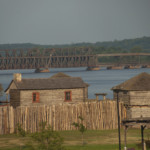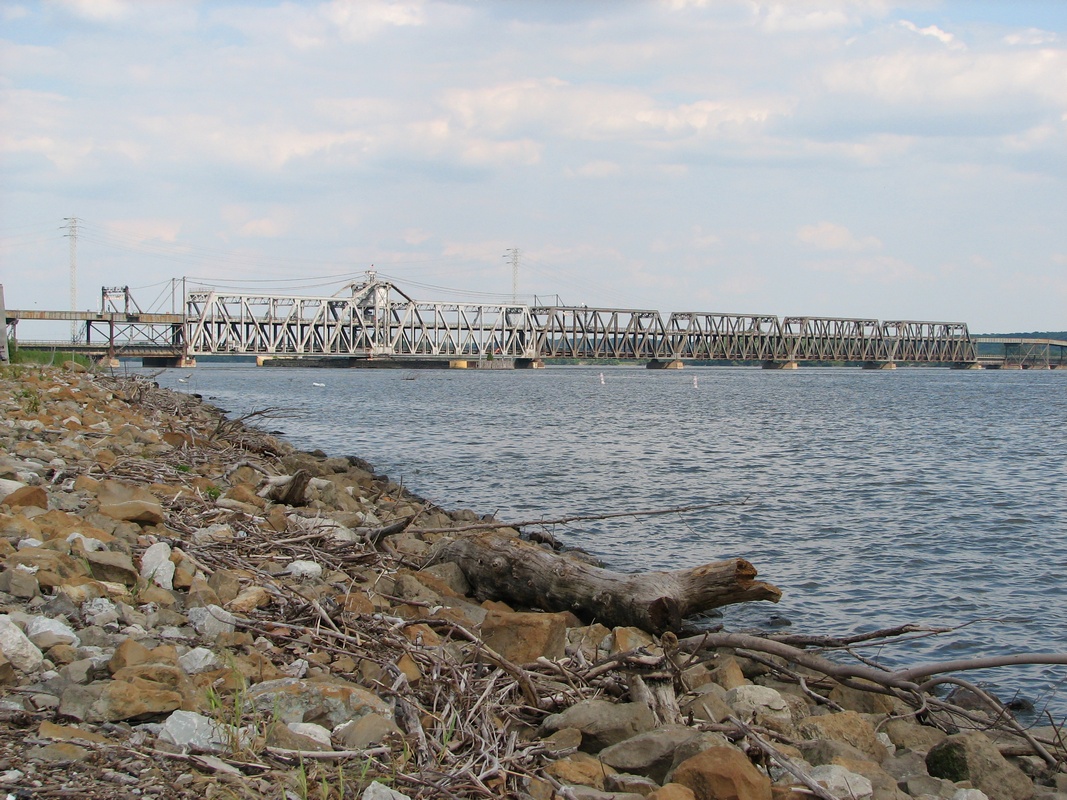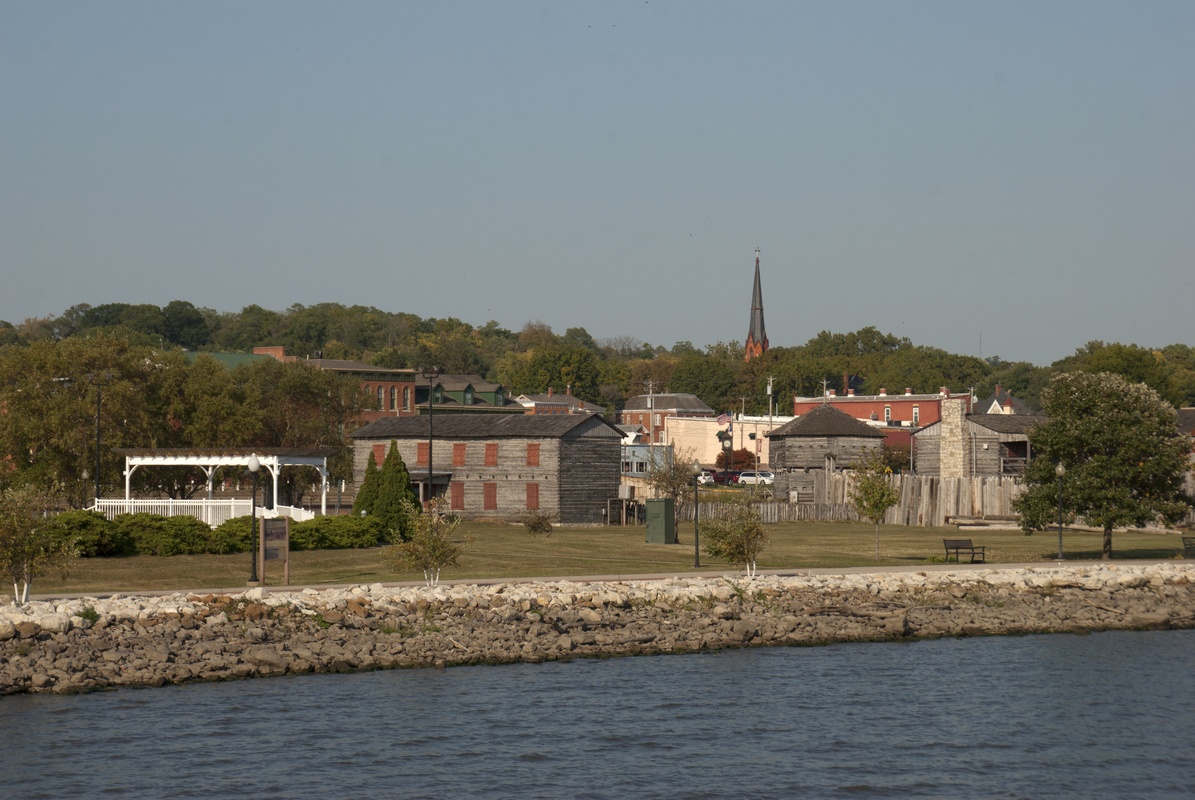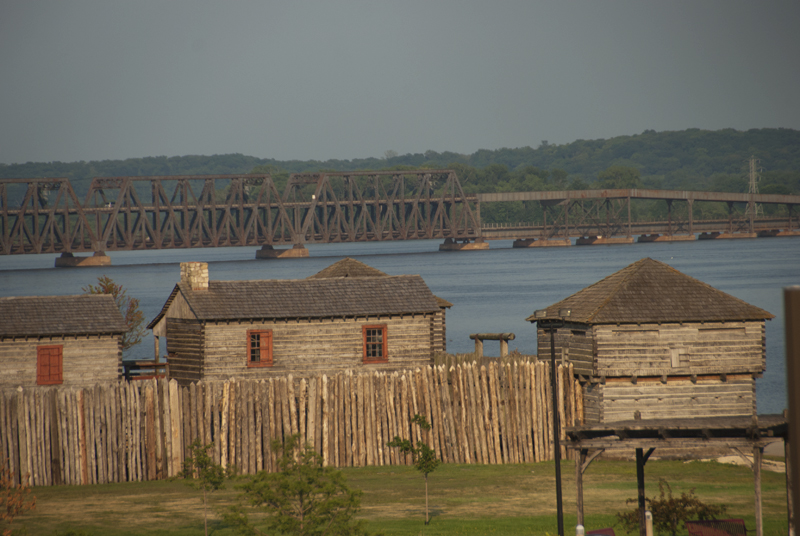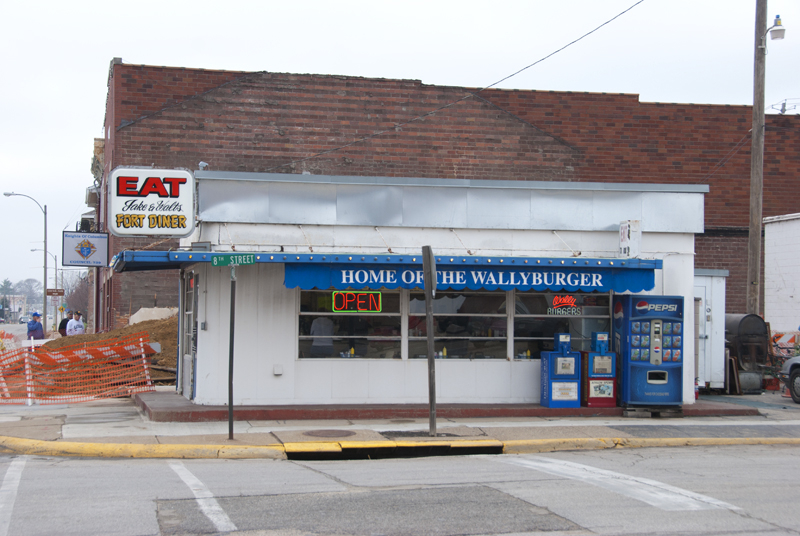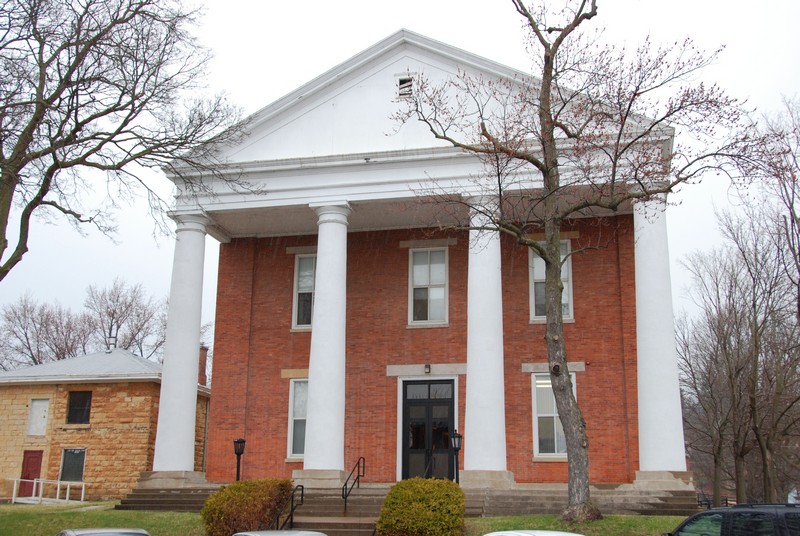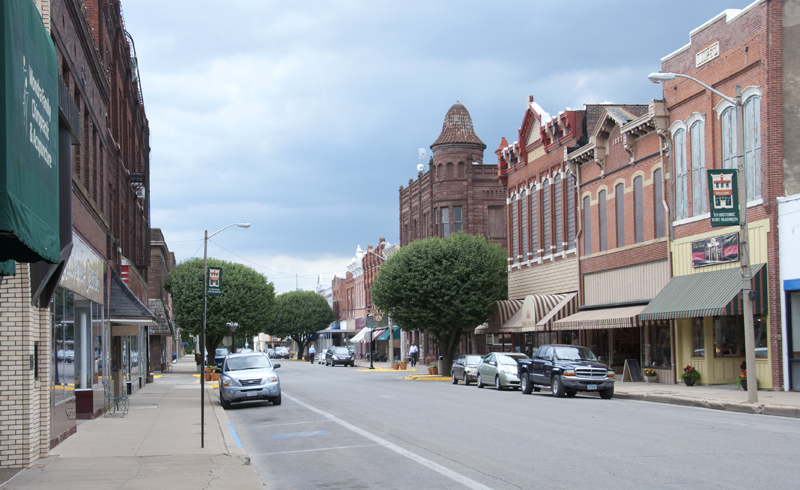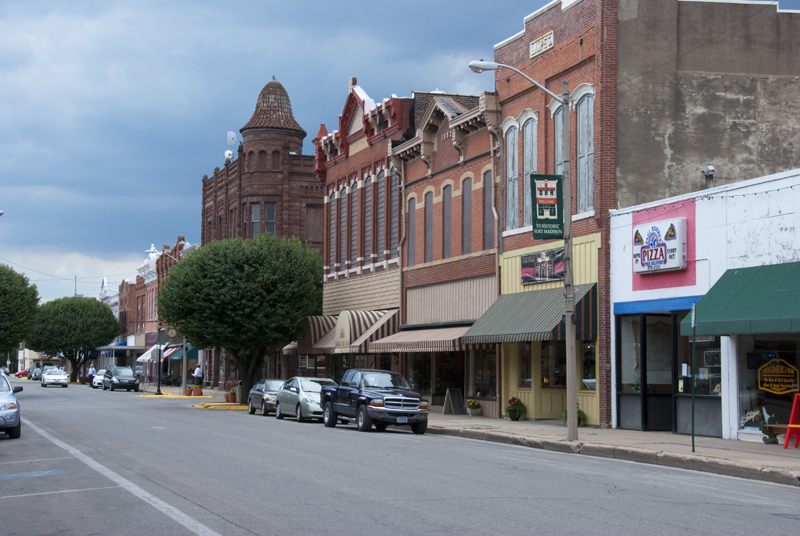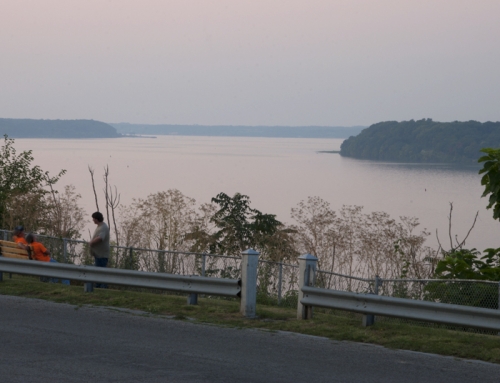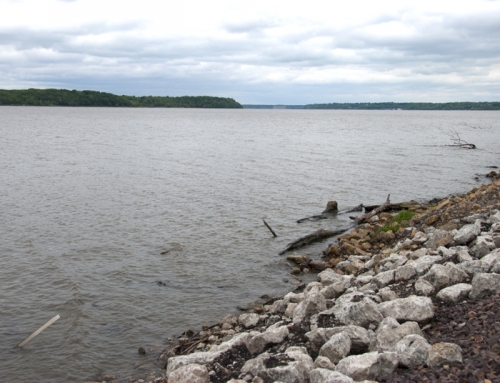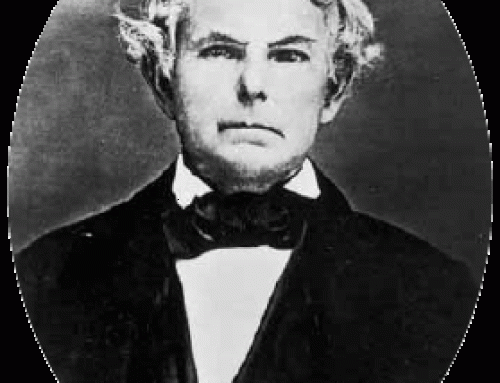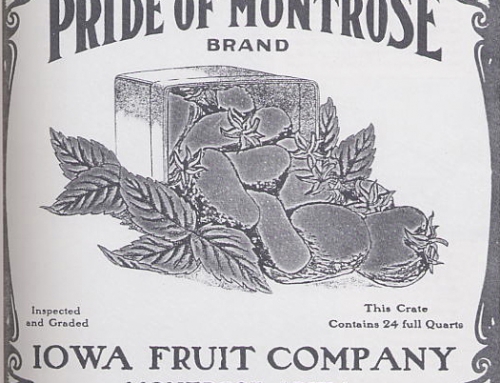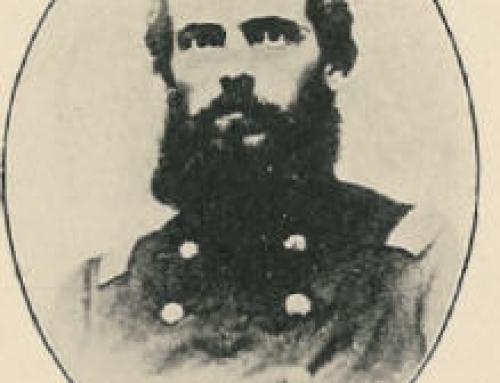Introduction
You can zip around Fort Madison on a highway bypass if you wish, but don’t. Take the exit and spend some time getting to know this old rivertown with an interesting history.
Visitor Information
For tips on the local scene, contact the Fort Madison Area Convention & Tourism Bureau (800.210.8687).
History
In 1805, General James Wilkinson, Governor of the new Louisiana Territory and commander of the western army, chose Zebulon Pike to lead an expedition to explore the upper Mississippi. A major focus of Pike’s trip was to locate the headwaters of the Mississippi River (he failed), but he was also asked to identify locations for forts (he fared better at that). One of the locations he recommended was at a place with a trading post known as Le Moine Factory. When the fort was finally built a few years later, it was initially called Fort Belle Vue, but the name was soon changed to honor then President James Madison.
The Sauk and Meskwaki didn’t take kindly to the construction of the fort, however. They believed it violated their territorial integrity under the Treaty of 1804. Black Hawk led an unsuccessful assault against it, but the Sauk and Meskwaki continually harassed the soldiers who lived there.
During the War of 1812, the Sauk and Meskwaki had better luck. A weeks-long siege that began in July 1813 convinced the soldiers to abandon the fort. They set it on fire as they escaped down the Mississippi for safety. About all that remained of the fort was a stone chimney, which remained standing for years. That’s how the area earned the nickname “Lone Chimney”, although the Native Americans called it Po-to-wo-nock for “the place of fire.” The fort was originally located about where the Sheaffer Pen parking lot is now (Avenue H between 4th and 3rd).
The land remained under the control of the Sauk and Meskwaki for a while after that, until they were forced to cede it in the aftermath of the Black Hawk War. In anticipation of the treaty, Peter Williams made the first land grab in 1832, but, he jumped the gun. Soldiers came down from Fort Armstrong to force him out. When Williams resisted eviction, the soldiers tied him to a tree and destroyed his cabin, then took him across the river to a prison at Commerce (Nauvoo). Williams wouldn’t give up, though. He returned in June 1833 and reclaimed the land after it was officially open to settlement. He didn’t have much time to enjoy his claim. Two years later he died along the Des Moines River.
N.C. Steele built one of the first boarding houses in Fort Madison, around 1836. It was a log cabin, just 12 feet by 16 feet. Steele built a clapboard addition for the guests. If you wanted to spend the night, you could expect to sleep on a square of canvas that was hung by a rope at the corners of each of four poles. Guests sometimes amused themselves by cutting all the ropes of one bed simultaneously, so the occupant would roll out onto the wood floor. If you got bored cutting bed ropes at the boarding house, you could visit one of many whiskey shanties along the riverfront, the purpose of which seems self-explanatory.
In 1836 Congress passed an act (back when they actually did such things) that called for a town plat and incorporation of Fort Madison; land sales followed soon after that. In the same year, residents of Fort Madison invited Black Hawk to the 4th of July celebration. Black Hawk lived nearby, in a home along Devil Creek two miles west of the city. He greeted the residents of Fort Madison as friends while defending the choices he made, but he focused mostly on reconciliation and looking to the future. He told those gathered:
“It has pleased the Great Spirit that I am here today. I have eaten with my white friends. The earth is our mother–we are now on it–with the Great Spirit above us–it is good. I hope we are all friends here. A few summers ago I was fighting against you–I did wrong, perhaps; but that is past–it is buried–let it be forgotten.
Rock River was a beautiful country–I liked my towns, my cornfields, and the home of my people. I fought for it. It is now yours–keep it as we did–it will produce you good crops.
I thank the Great Spirit that I am now friendly with my white brethren–we are here together–we have eaten together–we are friends–it is his wish and mine. I thank you for your friendship.”
The speech turned out to be a farewell for Black Hawk. He died three months later.
In 1839, the Iowa Territorial legislature picked Fort Madison as the site for a new prison. The Iowa State Penitentiary has grown quite a bit since that time, but the original 1840 cell house was still being used into the 1980s. It’s an imposing sight, with rough-hewn limestone walls set into a hill that rises away from the Mississippi. The prison houses Iowa’s maximum security inmates and was the site of many executions (the last one was in 1963; Iowa abolished the death penalty two years later). It houses about 800 inmates who will be transferred to a new prison that will probably open in late 2014.
Fort Madison grew pretty quickly thanks to milling (lumber and flour), the river trade, and the arrival of immigrants from Germany. By 1850, Fort Madison had 1,500 residents. Early village leaders passed strict blue laws to protect the Sabbath: it was illegal to sell goods, gamble, play any game, shoot guns, or run races for money on Sundays.
Aaron White and Joshua Owens operated the first ferry service. For the trip to Niota, Illinois, they charged 37 ½ cents for a man and a horse and $1 for a wagon and two horses. Ferries couldn’t cross the frozen river in winter, but the ice was usually thick enough to form a temporary bridge. Most years, one brave person would carefully test the ice by crossing it slowly, poking the ice to find soft spots, and marking the safe route with willows. For risking an icy death, that person was rewarded with free booze from local saloons and breweries.
Fort Madison got its first railroad line in 1856. The city granted a bridge charter and land to the Santa Fe Railroad after officials downriver in Keokuk balked. The railroad also opened yards that brought some 4,000 new residents to the city. The railroad bridge was finally built in 1887 and replaced in 1927. The new bridge had a dual track and a car deck; its 525 foot swingspan is the largest in the world. It’s quite a thrill to drive across (there’s a $1 toll for crossing eastbound), but you might want to take it slow.
The railroad triggered rapid population growth in Fort Madison, especially in the area west of 18th street which became known as Santa Fe Town. Among the new arrivals were Mexican workers enticed to the area by the railroad to fill a labor shortage during World War I. Hundreds settled in Fort Madison, many in a neighborhood called El Cometa near the rail yards between 29th and 33rd Streets. After the area flooded in 1926, most of the community relocated to a nearby area known as El Estafiate (named after a wild herb that grew nearby), where many lived in converted railroad cars before small houses were built. Hundreds of their descendants still live in Fort Madison, celebrating Mexican independence with an annual fiesta that goes back to 1924.
Ernest Corsepius arrived in Fort Madison in 1901 and started a business that harvested ice from the frozen Mississippi and shipped it to places as far away as St. Louis. He was also a fan of racing and built a boat called Minnie C II that won the 1908 Mississippi Valley championship when it beat the Independent from St. Louis.
Walter Sheaffer founded a pen company in 1908. He patented a deflatable rubber sac in the barrel of the pen that was quite an innovation. The Sheaffer Pen Company was a big hit. They built a new factory in 1952, then were purchased by Textron Corporation in 1966 and later by Bic. The Fort Madison factories closed around 2005, but the Sheaffer name is still used for some pens (but they are now made in China).
During the Roaring ‘20s, Fort Madison was flush with swing bands who filled local establishments with happy dancers. In 1925, the city renamed its streets to impose order where none previously existed.
Fort Madison has lost population in the past few decades, mostly as the railroad cut jobs, but there are still some big manufacturers nearby. Siemens builds wind turbines, and Armour has a meat processing plant on the south end of town.
Exploring the Area
The Daniel McConn Barn (2095 354th Ave/US Business 61), one of the largest barns you’ll ever see, was built in 1857 using native limestone and a heck of a lot of timber. It has three levels inside and three cupolas outside. It is still a working barn, so regular tours are not offered but it is easily visible from the highway. McConn was one of the first Europeans to live in the area and became one of the wealthiest.
Old Fort Madison, also in Riverview Park (319.372.6318; open April-October), is a reconstruction of the original 1808 fort. It was built using materials and methods that would have been used in the early 19th century. Guides in period garb tell visitors about life at the fort during the frontier era.
The Sheaffer Pen Museum (627 Avenue G; 319.372.1674) has an impressive collection of pens manufactured by the former Sheaffer Pen Company and also has several machines that were used to make them. The museum has limited hours, so call ahead to verify that they are open.
Lee County has two county seats (Fort Madison and Keokuk) and neither is centrally located; both are on the eastern edge of the county, on the Mississippi River. The curious arrangement dates to 1847. Fort Madison was initially designated the county seat in 1838 but fights over the location continued for a decade; it was nearly moved to the village of West Point in 1844 but West Pointians failed to build the promised courthouse. That meant that Fort Madison kept the county seat. As Keokuk grew in population and influence, though, its residents made a play for the county seat, too, which they eventually got, sort of. In 1848, the state legislature created a second county seat for Lee County and put it in Keokuk. Lee County still has those two county seats today, the only county in Iowa with such an arrangement. While there has been talk in recent years of consolidation, the issue remains divisive for the county’s 35,000 residents, who have grown used to having county government services nearby.
Some of Fort Madison’s county government services are housed in the North Lee County Courthouse (Avenue F at 7th Street), an impressive Greek Revival structure with four imposing columns in the front. It opened in 1842, designed by frontier priest/architect Father Samuel Mazzuchelli. The exterior remains much as he designed it.
Next door to the courthouse is the Old Lee County Jail; built in 1867, it is the oldest existing jail in Iowa (and was used well into the 1960s). The upstairs had room for 24 male inmates in 6 cells and 2 female inmates in another cell; the first floor had several cells for solitary confinement, which look like very good reasons to avoid getting arrested. If you want to tour the old jail, visit the North Lee County Historical Museum (see below) and ask.
The North Lee County Historical Museum (810 10th St.; 319.372.7661), located in the old Sante Fe Railroad depot (built for the Atchison, Topeka, and Sante Fe Railroad in 1911), houses displays about the railroad (naturally), Fort Madison and the Civil War, the state prison, and local industries like Sheaffer Pens. Next to the museum is an old steam engine, the 2913, that ran the route from Fort Madison to Los Angeles for 11 years.
Brush College, built in the late 1870s, is a stout one-room schoolhouse, preserved and managed by the local historical society (tours by appt; 319.372.7661).
Appleberry Orchard (2469 Highway 2; 319.372.1307), the descendant of long-time favorite, Faeth Orchards, grows quite a bit of fruit, especially apples, and runs a good-sized market that sells locally made jams, pies, syrups, and more. They also set up a corn maze and a pumpkin patch in the fall, so that’s pretty cool.
Parks Along the Mississippi River
Riverview Park (5th Street and Avenue H) is a pleasant place for an easy stroll along the river or to sit and watch the river roll by. In the park, you’ll find the Lone Chimney Memorial, a replica of the remnant chimney that stood in the area for many years after the fort burned. The replica was built in 1908 to mark the 100th anniversary of the building of Fort Madison.
Culture & Arts
The Fort Madison Area Arts Association (825 Avenue G; 319.372.3996) maintains a storefront gallery that showcases the works of local and regional artists.
Entertainment and Events
Farmers Market
Stock up on fresh produce at the weekly farmers market at the old depot (Avenue H at 10th St.) on Mondays (4-6).
Festivals
Fort Madison has some very popular and surprisingly long-standing festivals. They offer a good excuse to visit the city.
The Charlie Korschgen Kiddie Parade (July 4th) began rather modestly in 1913 when Fort Madison’s Charlie Korschgen noticed that neighborhood kids didn’t have much to do on the Fourth of July. His answer was to hand out small flags to a few of them, strap a snare drum around his neck, and lead them in a march around the block a few times. His idea caught on, gradually, eventually moving to downtown and involving the whole city. When Korschgen died in 1966, he had led the parade for a remarkable 53 years! The parade celebrated its centennial last year and is still going strong.
The Fort Madison Tri-State Rodeo (September) begins Labor Day weekend and has been packing in the crowds for over 65 years. It all began in 1948 when the city needed something to replace the annual Labor Day festivities, which was at risk of fading away with the railroad craft unions that had been a major supporter. Town leaders saw an opportunity when they realized that singer/rancher Gene Autry rested his livestock at Fort Madison every year as they traveled from Texas to New York City for a rodeo at Madison Square Garden. They convinced Autry to lend his support to a new rodeo in Fort Madison and committed the required local resources to make it happen. That first year, Autry was the main entertainment and the new arena was filled to the gills with 10,000 spectators. It’s never really slowed down. Every year, the rodeo draws popular entertainers, top-notch professional cowboys, and enthusiastic fans.
Several generations of Mexican Americans have called Fort Madison home and they and their ancestors have thrown a big party nearly from the beginning. The first Mexican Fiesta (September) was celebrated in the 1920s and is still a lot of fun, with traditional dance, dress, and food, plus carnival games. The festival takes place on Avenue Q at 34th Street.
**Fort Madison is covered in Road Tripping Along the Great River Road, Vol. 1. Click the link above for more. Disclosure: This website may be compensated for linking to other sites or for sales of products we link to.
Where to Eat and Drink
Faeth’s Cigar Store (832 Avenue G; 319.372.2792) has provided a friendly place to sip on a soda and chat for the past 90 years. If you need a new gun, ammo, or fishing supplies, you can buy those, too.
Commercial fishing on the Mississippi isn’t what it used to be, but there are still a few places where you can get a fresh catch of the day, including Quality Fisheries (2617 240th St.; 319.372.8750). The choices vary from day to day but often include fresh or smoked catfish, buffalo fish, sturgeon, and carp. And before you sneer, smoked carp is a delicious and inexpensive treat. Try some!
Swed & Co. Coffee (702 Avenue G) will satisfy your desire for a tasty cup of coffee and a snack, and maybe some good conversation, too.
The Fort Diner (801 Avenue H; 319.372.1949) is as classic as a diner can be, with legit roots to the 1930s and a hard-workin’ deep fryer. The space is tiny and they close early, but you’ll glad you had the experience.
Horan’s Cabaret Irish Pub (1337 Avenue G; 319.372.2556) is a popular local eatery, with satisfying food and a good beer selection.
A bite and a brew at the Lost Duck Brewing Company (723 Avenue H; 319.372.8255) comes with good views of the riverfront.
Turnwater Bar and Grill (318 Riverview Dr.; 319.250.9120) just might have the best patio next to the river. The spacious new building has plenty of room inside to eat and drink, but head straight to the sprawling, wraparound patio if the weather is nice. They offer a good range of food options, from smashburgers to a poke bowl and salads. Order your food inside, then find a place to sit. If you want a drink, head to the bar and order directly from the bartenders.
Where to Sleep
Camping
Duck Haven Campground (2748 241st St.; 319.572.1014) has 30 sites, some with electric and water, some primitive around a small lake just outside of the city; shower house on site.
Fort Madison runs two campgrounds. Expect RV sites with full hookups at the Fort Madison RV Park (Rodeo Park, 2103 303rd Ave.; 800.210.8687) and 20 sites with electric and showers at the Fort Madison City Campground (2134 302nd Ave.).
Bed-and-Breakfast Inns
Kountry Klassics Bed & Breakfast (Fort Madison: 2002 295th Ave.; 319.372.5484) rents two rooms, each with a private bath, in a quiet home decorated with antiques.
Moderate and up
The Kingsley Inn (707 Avenue H; 319.372.8747) has a great location: downtown, next to the riverfront, and in a historic old warehouse. The large rooms are decorated with Victorian flair and each room includes a full breakfast.
Getting There
Amtrak’s Southwest Chief which runs between Chicago and Los Angeles has one daily stop in Fort Madison. The train heading to Chicago stops in the morning, while the train from Chicago stops in the evening.
Resources
- Fort Madison Public Library: 1920 Avenue E; 319.372.5721
- Post Office: 1019 Avenue H
- Newspaper: The Daily Democrat (1226 Avenue H)
Community-supported writing
If you like the content at the Mississippi Valley Traveler, please consider showing your support by making a one-time contribution or by subscribing through Patreon. Book sales don’t fully cover my costs, and I don’t have deep corporate pockets bankrolling my work. I’m a freelance writer bringing you stories about life along the Mississippi River. I need your help to keep this going. Every dollar you contribute makes it possible for me to continue sharing stories about America’s Greatest River!
Fort Madison Photographs
©Dean Klinkenberg, 2024, 2021, 2018,2013,2011
